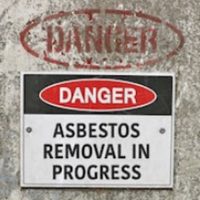Asbestos Exposure in the Workplace

While asbestos is no longer widely used across the United States of America, it remains a significant problem, especially in the workplace. Many people still work near asbestos or with asbestos-contaminated materials or products. Some high-risk professions include construction workers, mechanics, shipyard workers, manufacturing, and automotive repair. Asbestos puts many American workers at risk of developing serious illnesses, including mesothelioma and asbestosis. It is crucial for workers to understand how asbestos exposure occurs in the workplace and what to do in the event of an asbestos-related illness.
What Is Asbestos?
Asbestos is a naturally occurring mineral with long, strong fibers that are invisible to the human eye. This mineral is heat, chemical, and fire resistant, which is why it was commonly used across various industries before the 1980s. Asbestos was mainly used in building materials, fireproofing materials, insulation, brakes, and more. Before the 1980s, companies in the United States produced countless products containing asbestos. Because of this, asbestos remains a huge problem to date.
Occupations That Are at the Greatest Risk of Asbestos Exposure
The occupations at the most significant risk of asbestos exposure are those where asbestos-containing materials have historically been prevalent. They include the following;
- Construction workers
- Shipyard workers
- Firefighters
- Industrial workers
- Power plant workers
- Automotive mechanics
How Are Workers Exposed to Asbestos
Inhalation is the primary way workers get exposed to asbestos. When asbestos or asbestos-containing materials are disturbed, tiny asbestos fibers, which are invisible to the human eye, are released into the air. These fibers can remain in the air for long, making inhalation possible even after the initial disturbance has stopped. Asbestos fibers can also get into the body through ingestion. Workers may inadvertently ingest food or beverages contaminated with asbestos dust. This can occur if workers work with asbestos or asbestos-contaminated materials and then touch their food or drinks without properly washing their hands. Asbestos fibers may also fall on utensils or food and beverages.
Effects of Asbestos Exposure
When a worker is exposed to asbestos, they could develop several serious health conditions, including the following;
- Mesothelioma
- Asbestosis
- Lung cancer
- Ovarian cancer
- Pleural effusion
- Pleural plaques
- Fibrotic lung disease
The symptoms of some of these illnesses, such as mesothelioma, may not manifest for decades after initial asbestos exposure. This makes identifying the source of illness challenging and complicates treatment efforts.
Is There a Safe Level of Asbestos?
Short-term asbestos exposure rarely causes disease, although it is possible to suffer a disease after a one-off exposure. In other words, there is no safe level of asbestos exposure. However, most individuals who suffer asbestos-related illnesses have worked heavily with asbestos for most of their careers.
What To Do in the Event of an Asbestos-Related Illness
In the event of an asbestos-related disease, seek immediate medical attention and follow the doctor’s instructions. Second, notify your employer immediately about your illness. Third, seek advice from a qualified workers’ compensation attorney regarding potential benefits available for your illness. After suffering an asbestos-related disease on the job, you may be entitled to workers’ compensation benefits, including medical, income, rehabilitation, and disability benefits. A skilled lawyer can guide you through the claims process.
Legal Help Is Available
For legal help, contact our qualified Vermont workers’ compensation attorney at Sluka Law PLC.
